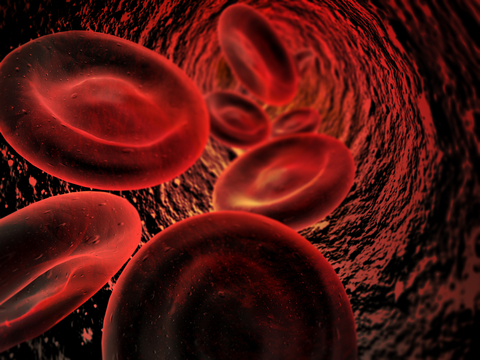
THROMBOPHILIA

DIVISION OF HEMATOLOGY

Scenario 3 |
||||||||||||||||||||||||||
Expert Opinion
|
Key points:
The question: Yes No Which tests would you order at this office visit?
None On a scale from -1 (less likely to screen) to +1 (more likely to screen), how does the following information affect your choice to screen?
Issues addressed:
Long Haul Travel:The focus of this question centers on the fact that the patient had an event precipitated by an airline flight. The phenomenon of VTE after long haul flight has been termed ‘economy class syndrome’ and has garnered much attention among the public and press. Concerns have been raised regarding cramped seating and suboptimal cabin conditions.1 However, in the LONFLIT study, which looked at flights over 10 hours, no VTE were identified in 355 patients without additional risk factors such as previous DVT, documented coagulation disorder, or neoplastic disease.2 A second study identified a thrombophilia in 72% of patients with travel-related VTE. 30% of these patients had FVL mutation.3 Regardless of the causation, it is advisable to counsel patients taking long flights to engage in regular mobilization or calf compression, to avoid constrictive clothing, and to avoid alcohol and diuretics if possible. In patients considered high risk for VTE, the 2008 ACCP guidelines recommend graded compression stockings or a single dose of prophylactic LMWH. Aspirin is not recommended.4 Given this evidence, the patient should be counseled about and screened for a hypercoagulable state if she gives her consent. The optimal duration of anticoagulation in this context remains highly controversial. Recent guidelines encourage consideration of risk/benefit for anticoagulation beyond three months, and certain deficiencies such as Antithrombin III or compound thrombophilias would affect peripartum management as described previously.5 Therefore, identification of certain states would change management in this patient, and are important to identify in women of childbearing age. back to issues Pulmonary embolism:Pulmonary embolism (PE) is a very serious condition with an associated mortality rate of 2 to 8 percent despite proper treatment with anticoagulation.6,7 In a recently published registry that examined PE across Europe and North America, almost 50% of PEs were accompanied by DVTs.8 Furthermore, some experts claim that about half of PEs are undiagnosed.9 Interestingly, there have been some recent studies looking at pulmonary embolism and thrombophilia. An Italian study looking at patients with proximal DVT of the legs examined the relationship of different thrombophilias with accompaniment of symptomatic PE. Antithrombin III deficiency and prothrombin G20210A significantly increased the risk of PE (RR of 2.4 and 1.5 respectively) while FVL was associated with a relative risk of 0.7. However, confidence intervals just touched 1.0.10 This finding, termed “the Factor V Leiden paradox” has been reproduced in several other studies.11 It has been hypothesized FVL patients are at lower risk of embolization because thrombus formed tends to be more stable and adherent to the vessel wall. back to issues Unfortunately, the prevalence of thrombophilia in patients presenting with PE remains unclear and at present, this indication (in isolation) for thrombophilia testing is highly debated. Furthermore, no evidence exists to support the concept that more severe PEs are associated with a higher incidence of inherited or acquired thrombophilia. Smoking:The link between smoking and VTE has been a topic of debate dating back several decades. While clearly established as a risk factor for arterial thrombosis, studies have been published which both support and refute an association between increased risk of VTE and smoking. Recently, a large case-control study was published which showed a moderately increased risk of VTE in current smokers compared with subjects who had never smoked (RR of 1.43). The relative risk was slightly reduced in patients who were former smokers, and was much higher in patients with a greater than 20 pack year history (RR of 4.30). Moreover, smoking as a risk factor was synergistic with other risk factors studied including use of OCP, FVL heterozygosity, and prothrombin 20210A mutation.12 Therefore, in the above patient, the patient should be counseled about smoking cessation, but it should not affect the decision to screen her given the arguments presented above. However, in patients without such considerations, smoking might be considered a reversible risk factor, and could be a deterrent to screening for thrombophilic states. Conversely, given possible synergism, one might argue to screen for thrombophilic states more vigorously in patients that use tobacco products. back to issues Timing of thrombophilic testing:The final important point this question addresses is the timing of thrombophilia screening. Unfortunately acute thrombosis can lower levels of Antithrombin, protein C and protein S. Therefore if tested during an acute episode, normal levels are helpful to rule out these deficiencies, but low levels may be consumptive or pathologic. Furthermore, heparin and coumadin will make interpretation of lupus anticoagulant difficult. In fact, the only thrombophilias that CAN be tested in the acute anticoagulated setting include FVL and Prothrombin G20210A (both genetic tests) and antiphospholipid antibodies (specifically anticardiolipin antibody and anti-beta2 glycoprotein antibodies). It is therefore more cost effective to consider testing once the patient has discontinued anticoagulation. If this is not possible, it is recommended to switch to LMWH and test once off coumadin for at least two weeks, in which case only Antithrombin levels and lupus anticoagulant will be affected. back to issues Pre-pregnancy:See pre-pregnancy counseling under scenario 2. back to issues 3. Parsi K, McGrath MA, Lord RSA: Traveller’s venous thromboembolism. Hawaii Med J. 2000. 59:160-161. 4. Hirsh J et al. American College of Chest Physicians Evidence-Based Clinical Practice Guidelines 8th edition. Chest. 2008. 133:71S-105S. 7. Nijkeuter M et al. The natural course of hemodynamically stable pulmonary embolism: clinical outcome and risk factors in a large prospective cohort study. Chest. 2007. 131(2):517-23. 8. Goldhaber SZ, Visani L, DeRosa M. Acute pulmonary embolism: clinical outcomes in the International Cooperative Pulmonary Embolism Registry (ICOPER). Lancet. 1999. 353:1386-89. 9. Thompson BT and CA Hales. Overview of acute pulmonary embolism. UpToDate Online. Version 16.3. Last viewed March 8, 2009. 10. Rossi E et al. The risk of symptomatic pulmonary embolism due to proximal deep venous thrombosis differs in patients with different types of inherited thrombophilia. Thromb Haemost. 2008. 99:1030-34. |
|||||||||||||||||||||||||
